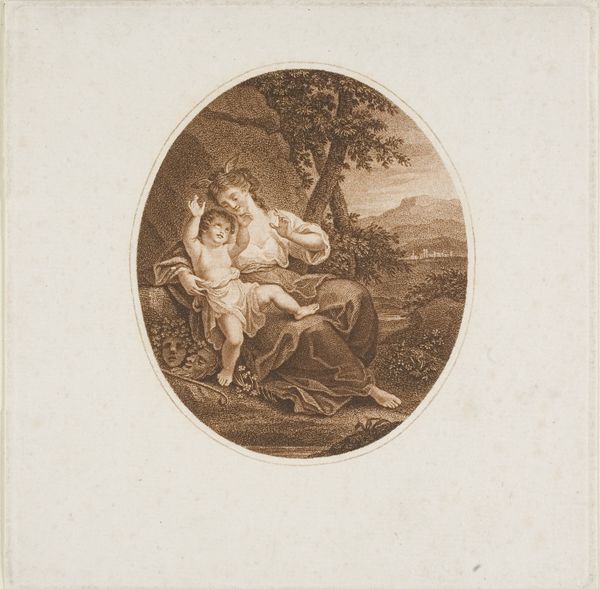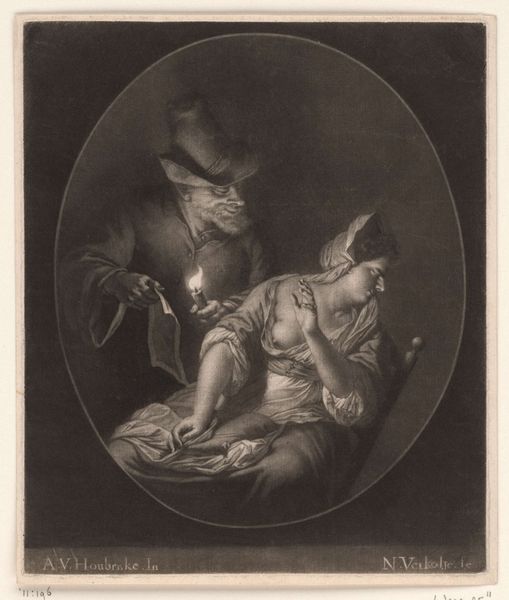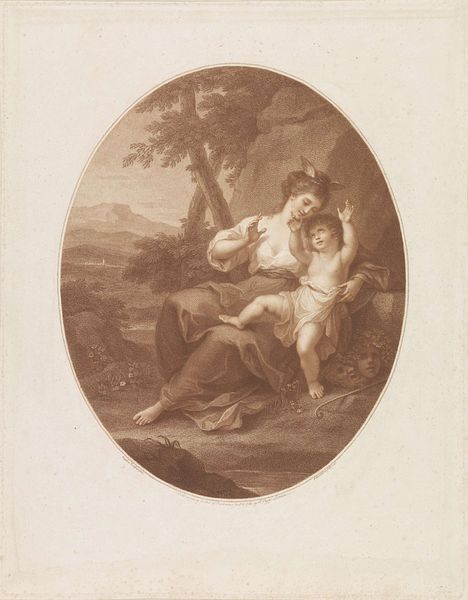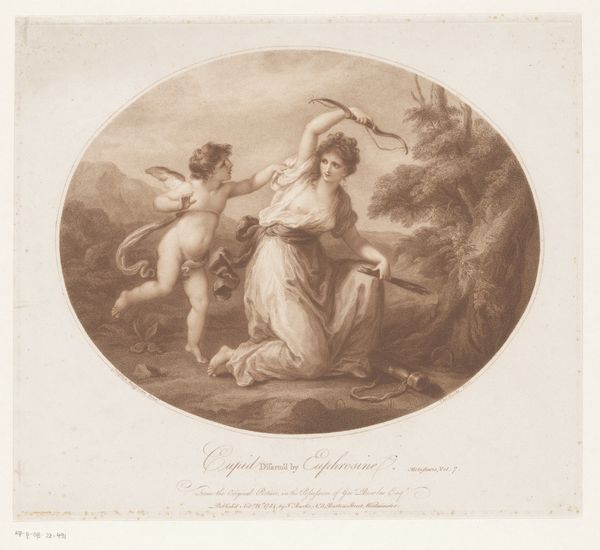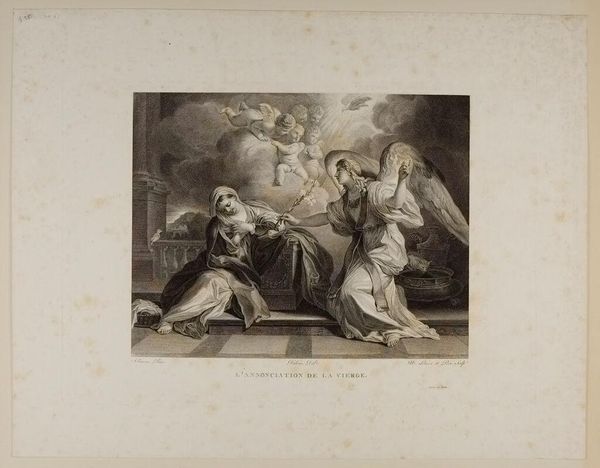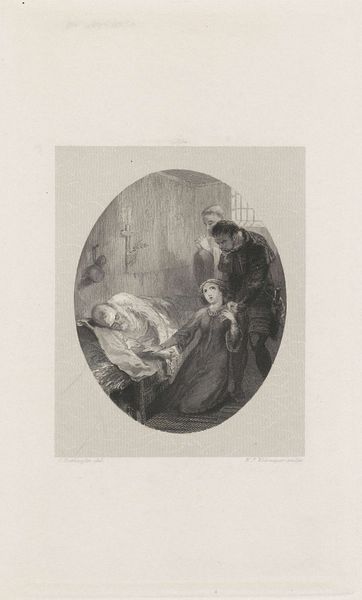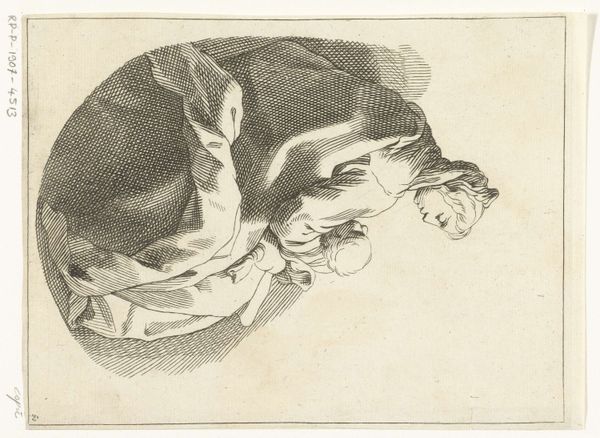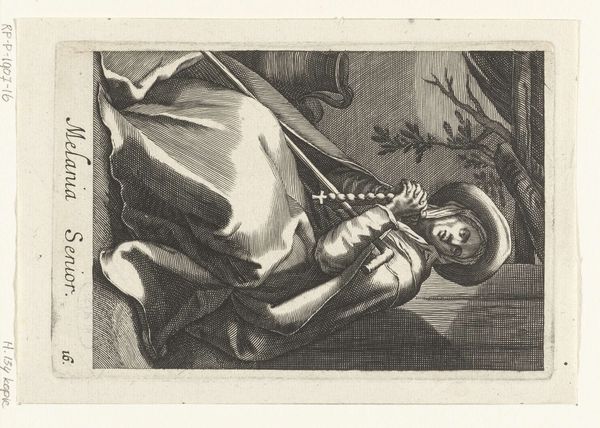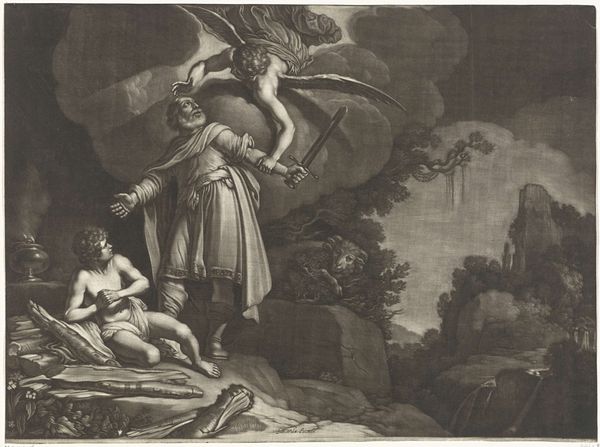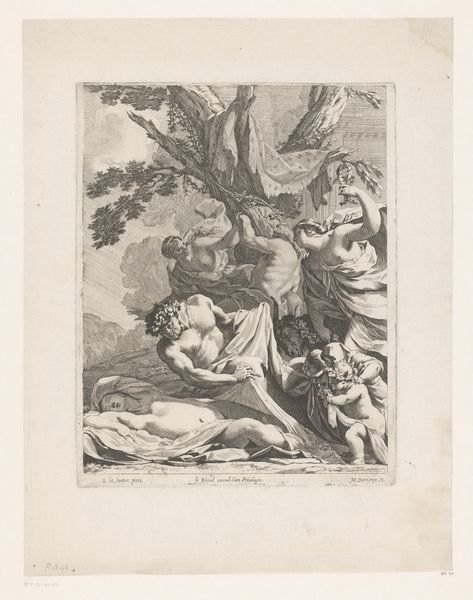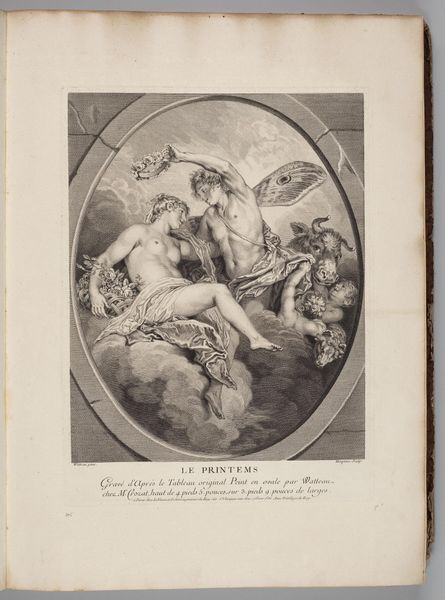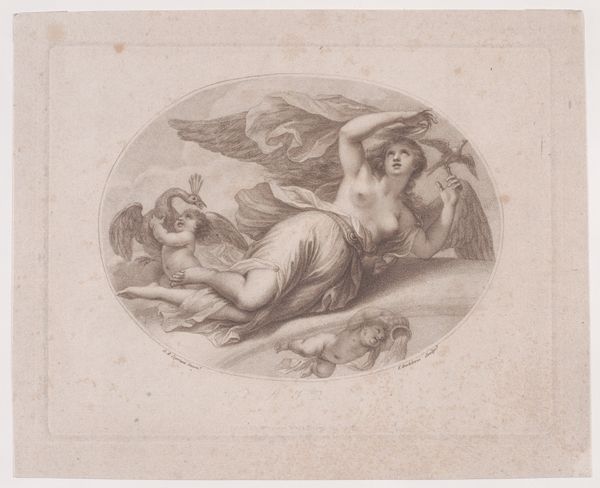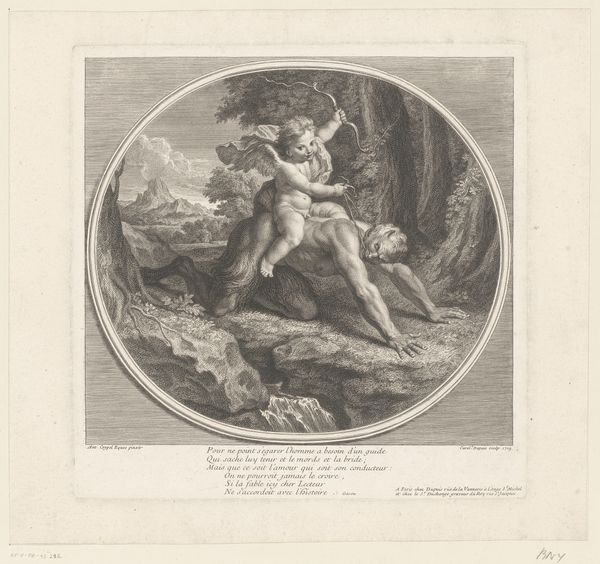
print, paper, engraving
# print
#
figuration
#
paper
#
pencil drawing
#
romanticism
#
history-painting
#
engraving
Dimensions: height 227 mm, width 253 mm
Copyright: Rijks Museum: Open Domain
Curator: It strikes me immediately—the circular composition, the chiaroscuro—a vortex pulling us into Dido's tragic moment. Editor: The work we’re looking at is an engraving, and likely also pencil drawing, titled "Dido op de brandstapel," or “Dido on the Pyre,” made sometime between 1783 and 1851 by Willem van Senus. It resides here at the Rijksmuseum. Curator: The very specific use of the engraving technique produces this effect of contained grief; observe the limited tonal range used here. The stark contrast, coupled with her languid pose, enhances the drama. It really accentuates the figure of Dido as she lies upon that pile of wood, as if she is waiting for the fire. Editor: Right. What's striking is the choice to create an easily reproducible artwork like an engraving for this scene of such supposed high drama. Who was the audience, and where and how was it being consumed? And how might we consider the economics around this very dark scene? Was it widely circulated as a political critique about colonialism, considering Dido's Carthage and the history of this city and its eventual fall after war? Curator: Hmm, an interesting point, but wouldn’t you agree that the drama hinges more on the figure of Dido herself? It's not necessarily a statement against empire, although there is this visual presence of a receding ship in the background which perhaps carries the weight of that story? Consider the light reflecting from her garments—an artistic gesture indicating inner turmoil. And then observe how all our eye gets drawn to her vulnerable and reclining form... her whiteness is certainly deliberate, isn't it? The luminosity almost hurts your eyes! Editor: But that light, or those marks upon her garments that suggest "light" are also marks of labor, right? The light comes from someone engraving into a plate and pressing it on the paper. What kind of labour went into the lines, the tonal decisions, and distribution networks for images like this? Curator: You draw me back into the socio-political reading! I do get it; without that labour we could not enjoy her presence like this... What a fascinating push and pull this work offers, between a tragic moment framed as high drama, and its means of production. Editor: Indeed. There is always an intersection of materials, their making, and what it depicts. A good reminder of that, don’t you think?
Comments
No comments
Be the first to comment and join the conversation on the ultimate creative platform.
